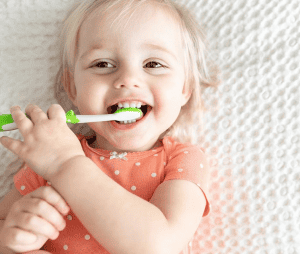Oral hygiene is an essential part of our daily routine, and two primary practices lead the way—flossing and brushing. We’ve all been there, standing in front of the bathroom mirror, wondering, “Should I floss before or after I brush my teeth?” It’s a common question, and the answer might surprise you.
The sequence of these two essential practices can significantly impact your oral health. In this comprehensive guide, we’ll explore the benefits of flossing before brushing and flossing after brushing. We’ll delve into the science behind each approach, the rationale of dental professionals, and provide tips to help you make an informed decision. So, let’s unravel the mystery of the flossing and brushing order for optimal oral health.
The Importance of Flossing and Brushing
Before we dive into the debate, let’s reinforce why both flossing and brushing are crucial for your oral health.
1. Brushing: Brushing your teeth is the most recognized step in oral hygiene. It primarily helps remove plaque—a soft, sticky film of bacteria—on the teeth, which can lead to cavities, gum disease, and bad breath. Brushing also stimulates the gums and strengthens tooth enamel.
2. Flossing: Flossing complements brushing by removing food particles, plaque, and bacteria from the tight spaces between your teeth and along the gumline. Neglecting to floss can leave approximately 35% of your tooth surfaces uncleaned.
Now that we’ve established their significance, it’s time to address the central question: When should you floss?
Flossing Before Brushing
Flossing before brushing, as advocated by many dental professionals, is often regarded as the superior approach. Here’s why:
- Plaque Removal Efficiency
Flossing first loosens and removes particles and plaque from between your teeth. This creates a cleaner, more accessible surface for your toothbrush. It’s like clearing the path before walking. By flossing first, you allow your toothbrush to do a better job at removing the remaining plaque from your teeth.
- Gum Stimulation
Flossing before brushing is a gentle yet effective method to stimulate the gums. The motion of flossing improves blood circulation, which can be especially beneficial if your gums tend to bleed or if you have gum disease. Stimulated and healthy gums are an integral part of oral health.
- Better Fluoride Penetration
Flossing before brushing ensures that the fluoride in your toothpaste reaches more tooth surfaces. Fluoride is essential for strengthening tooth enamel and preventing tooth decay. A cleaner tooth surface allows for better fluoride penetration.
- Reduces Bad Breath
Flossing before brushing removes food particles and bacteria from between your teeth and along the gumline. This can significantly reduce the chances of bad breath, also known as halitosis.
- Prevents Cross-Contamination
Flossing first helps to prevent the transfer of bacteria from one area of your mouth to another. If you were to brush first, you could potentially move bacteria from between your teeth to other areas.
Flossing After Brushing
Flossing after brushing is another approach adopted by some individuals. While it’s less common, there are valid reasons for this sequence:
- Post-Brushing Clean-Up
Flossing after brushing serves as a final clean-up, ensuring that no debris is left between your teeth. Some people prefer this approach because it gives them a sense of completeness and cleanliness.
- Removal of Dislodged Debris
Brushing can sometimes dislodge food particles and plaque from between your teeth. Flossing after brushing helps ensure that this debris is removed from your mouth.
- Habit Formation
For individuals who find it challenging to floss regularly, following the brushing habit with flossing can be a helpful way to incorporate flossing into their daily routine.
Now that we’ve examined both sides of the argument, you might be wondering, “Which is the right approach for me?”
Making Your Decision
The order in which you floss and brush ultimately comes down to personal preference and effectiveness. Here are some factors to consider when deciding which sequence is best for you:
- Consistency: The most critical aspect of your oral hygiene routine is being consistent. Whether you choose to floss before or after brushing, what matters most is that you do both regularly.
- Individual Needs: Your dental health needs might influence your choice. If you have specific issues, such as bleeding gums or orthodontic appliances, consult your dentist for personalized advice.
- Gum Sensitivity: If your gums are sensitive or tend to bleed, flossing gently before brushing may be more comfortable.
- Orthodontic Appliances: If you have braces, it’s often recommended to use a floss threader to clean between wires and brackets. In this case, you might prefer to floss after brushing to remove any dislodged debris.
- Effectiveness: Pay attention to how clean your mouth feels after flossing and brushing in different orders. Choose the sequence that makes you feel the most refreshed.
The debate over whether to floss before or after brushing ultimately rests on individual habits, comfort, and effectiveness. What’s most important is that you maintain a consistent oral hygiene routine, incorporating both flossing and brushing.


